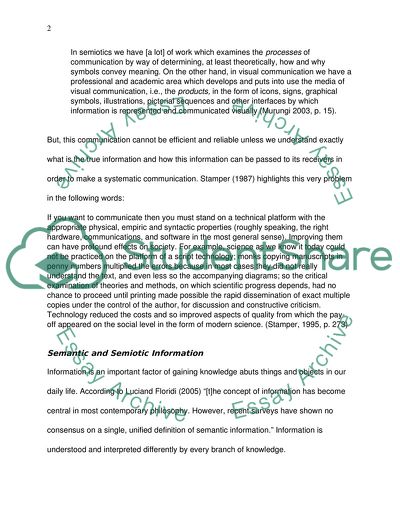Cite this document
(Semiotic and Semantic Information Essay Example | Topics and Well Written Essays - 2500 words, n.d.)
Semiotic and Semantic Information Essay Example | Topics and Well Written Essays - 2500 words. https://studentshare.org/social-science/1713676-smntic-information-systemit-is-not-topicit-is-just-moduletopic-u-have-find-ur-self-iwth-my-giving-nots-by-fax
Semiotic and Semantic Information Essay Example | Topics and Well Written Essays - 2500 words. https://studentshare.org/social-science/1713676-smntic-information-systemit-is-not-topicit-is-just-moduletopic-u-have-find-ur-self-iwth-my-giving-nots-by-fax
(Semiotic and Semantic Information Essay Example | Topics and Well Written Essays - 2500 Words)
Semiotic and Semantic Information Essay Example | Topics and Well Written Essays - 2500 Words. https://studentshare.org/social-science/1713676-smntic-information-systemit-is-not-topicit-is-just-moduletopic-u-have-find-ur-self-iwth-my-giving-nots-by-fax.
Semiotic and Semantic Information Essay Example | Topics and Well Written Essays - 2500 Words. https://studentshare.org/social-science/1713676-smntic-information-systemit-is-not-topicit-is-just-moduletopic-u-have-find-ur-self-iwth-my-giving-nots-by-fax.
“Semiotic and Semantic Information Essay Example | Topics and Well Written Essays - 2500 Words”. https://studentshare.org/social-science/1713676-smntic-information-systemit-is-not-topicit-is-just-moduletopic-u-have-find-ur-self-iwth-my-giving-nots-by-fax.


